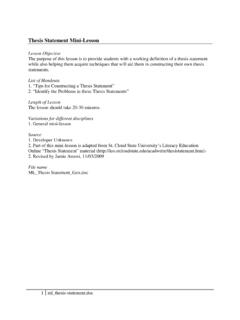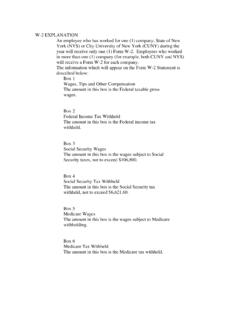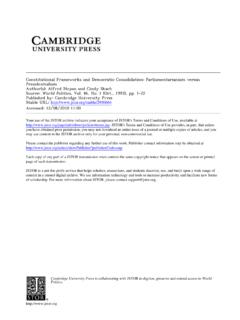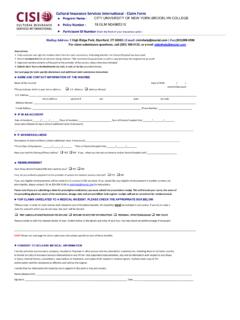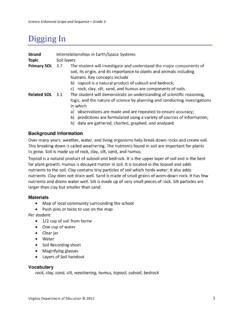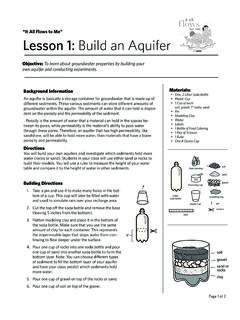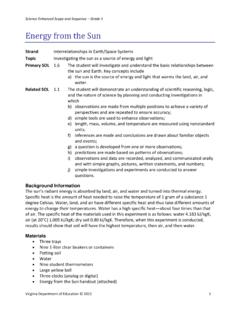Transcription of Drinking Water Test Parameters - Brooklyn College
1 Drinking Water Test Parameters How much of our planet is Water ? Parameters for Drinking Water Testing Hardness pH. Copper Iron Phosphate Chlorine Ammonia Chromium Hardness Minerals from rocks and soil give Water its hardness pH. pH is how acidic or basic something is. Copper From pipes and industrial components Iron Enters Water from rocks and soil Phosphate Found in many detergents Stimulates plant growth Chlorine Used for disinfection Ammonia Fecal matter and decaying vegetation produce ammonia Chromium Can be naturally occurring or the result of industry Parameters for Drinking Water Testing Hardness pH. Copper Iron Phosphate Chlorine Ammonia Chromium Lesson Title: Drinking Water Testing Objectives/ SWBAT: Utilize test kits to quantify contaminant levels of Water from multiple sources. Create a profile of NYC municipal Water from multiple local sources.
2 Understand the significance of test results with respect to Drinking Water consumption safety for humans. Lesson duration: 3 days Aim: What contaminants are found in NYC Water ? Do Now: List as many potential contaminants to Drinking Water that you can think of. Materials: LaMotte Water quality testing kits & pipets Stopwatches Water supply Data worksheet Computers for poster preparation Procedure: Day 1. 1. Use powerpoint presentation to demonstrate the limited supply of clean Drinking Water , and to cover the 8 Parameters to be tested on Water supplies, with a focus on the source and harmful levels of the contaminant. 2. Break students into groups. They must design their own experiment clarifying which Water sources they plan to test, at which times they will collect the sample, and a hypothesis of which types of contaminants they anticipate finding in the Water .
3 3. Review of good technique for sampling Water (sample early in morning, fill sample bottle to rim to minimize air contact). Day 2. 1. Do a demo of how the test kits work. 2. Students begin conducting 8 tests on their 2-3 selected Water samples. Data collection sheet with normal ranges included below. Day 3: 1. Students continue the Water testing from previous day. 2. Data is displayed as a big spreadsheet on the board. There is a class discussion to analyze the results. Students must prepare a report of the experiment for homework. Homework: Students will write a report in scientific format. Name:_____ Date: _____. Drinking Water Data Collection Source:_____ Source: _____. Parameter: Normal range: Test site 1: Test site 2: Hardness 5-50ppm pH Copper < Iron < Phosphate < Chlorine < Ammonia <1ppm Chromium < Notes: ( how was Water collected, notes on appearance, etc).
4 Name:_____ Date: _____. Drinking Water Data Collection Source:_____ Source: _____. Parameter: Normal range: Test site 1: Test site 2: Hardness 5-50ppm pH Copper < Iron < Phosphate < Chlorine < Ammonia <1ppm Chromium < Notes: ( how was Water collected, notes on appearance, etc).

